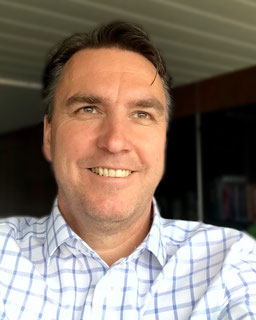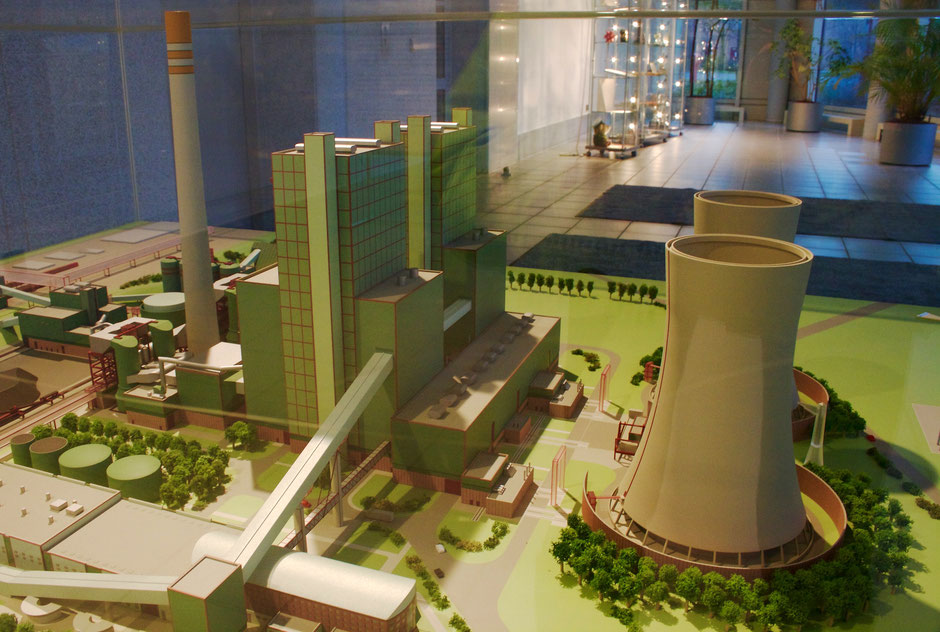At the power plant in Schkopau, IEM ConveyingSystems is building a complex cleaning system that will remove mercury from the exhaust gases by means of activated carbon.
In an interview, Ralf Zander (CEO) explains why he doesn’t believe much in phasing out lignite and what led him to have a blog tracking the work in Schkopau – the Mercury-Free Blog.

Ralf Zander Managing Director of IEM ConveyingSystems
Mercury Free Blog: The reduction of mercury emissions from lignite-fired power plants is decided: new, stricter limits will apply from 2019. Power plants are now forced to retrofit. The environmental policy goal – to make power plants cleaner with regard to mercury – seems to have been achieved. Why still this blog?
Ralf Zander, Managing Director IEM: I wouldn’t say ‘nevertheless’, but ‘now more than ever’. There is the idiom: ‘Do good and talk about it’. On the one hand, reducing emissions is a challenge for power plants that no one can deny the necessity of. On the other hand, it brings with it high costs. In the last five years, the discussion on mercury reduction has been kept under the cloak of silence. Officially, the problems with mercury did not exist. People liked to compare with power plants in China or even India, where many times more emissions are emitted. In this ratio, the mercury problem here is of course minor.
On the other hand, Germany wants to be a pioneer for green technologies…
Which is a balancing act. I think it is very positive that German companies are setting a good example. However, politics is putting a lot of pressure on the power plants. It gives the impression that the power plants are to be brought to their knees and their existence questioned. Someone who doesn’t know much about power plants and only sees the chimneys may not know how existential this issue is. I would like to see a power plant stop working in a metropolitan region. That would be an eye-opener for many people.
Who should feel targeted by the Mercury Free blog?
We want to reach those who are not experts in the field of coal-fired power plants. We want them to see that power plants can be pioneers in environmental technology. Research was carried out in Schkopau long before it was required by law. So we are not sitting idly by. In this way, we are of course also promoting the power plants, which are otherwise often described as polluters.
“A lignite phase-out cannot be stopped in the short term. Unless we prepare ourselves for a power cut during the day.”
A lignite phase-out is being heavily discussed right now. Is it still possible to have a constructive discussion?
It is difficult, because both sides – pro and contra coal – are drifting further and further away from each other. Politicians are often advised by institutes that are painted dark green. In the discussion, however, many things are left out. Take electric cars, for example: if more of them are on the roads, we will have a higher demand for electricity – even during the day. So in the future, coal-fired power plants will be needed even more urgently. In my opinion, a lignite phase-out cannot be absorbed in the short term with other energy sources. Unless we prepare for a blackout during the day.
IEM is currently building a system at the Schkopau power plant. With the help of activated carbon, it will filter a large part of the mercury out of the exhaust gases. How is the work progressing?
All in all, quite excellent. We are minimally behind schedule. The approval of the building application by the authorities took a little longer than we expected. But that doesn’t put us off our stride. The statics have been checked. We have received minor conditions, but these will not cause any further delays. We expect to start the foundation works within the next four weeks.
“What works in one power plant doesn’t necessarily work in the other.“
Schkopau is not the only power plant that needs to be refitted. Are there other power plant operators who have expressed interest in this plant?
There is hardly a power plant in Germany where the problem is as complex as in Schkopau. The fuel in combination with the boiler there is a challenge for reducing mercury. Other lignite-fired power plants manage with much less effort. But in the meantime we have received initial enquiries from Poland and the Czech Republic. We will carry out the first test runs there from the middle of this year.
Then we can build on the experience from Schkopau…
We can then do without some tests. Nevertheless, we must remember that what works in one power plant does not necessarily work in the other. That is good for us, because cheap copies of our plants will not keep their promise.
“We are able to handle different fuels and load conditions.”
What are the costs for the installation of such a facility?
That depends on many different determining factors: How much mercury and other elements are contained in the coal and how difficult is it to oxidise the mercury? What type of power plant do we have and how susceptible is it to different modes of operation? Adjusting one set screw can quickly lead to further measures, as we have to consider a multitude of chemical reactions. The investment costs can range from a few hundred thousand euros to many millions of euros. But it is more important to find a technology where the operating costs are low afterwards. We have paid special attention to this in Schkopau. The plant is of a high quality and thus we are able to deal with different fuels and load conditions.
Is there a market for this system outside the EU?
Absolutely, and we are already promoting our technology worldwide. At the end of May, for example, we will be at the Global Electric Power Tech trade fair in Seoul. We will have a stand there together with our South Korean partner and I will give a presentation on our experiences in mercury reduction.



